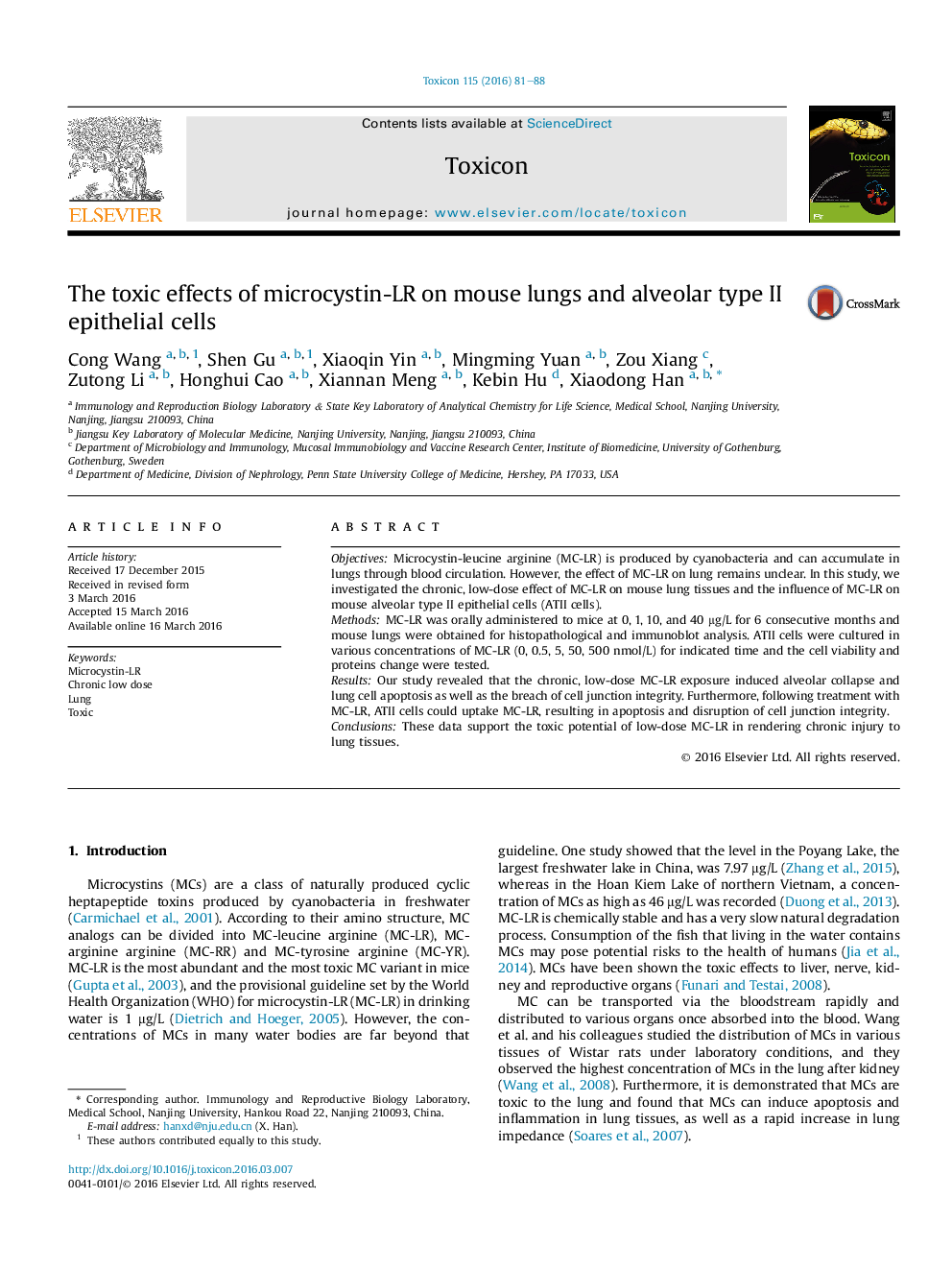| Article ID | Journal | Published Year | Pages | File Type |
|---|---|---|---|---|
| 2064383 | Toxicon | 2016 | 8 Pages |
•Chronic low-dose exposure to MC-LR was toxic to lung.•MC-LR could induce the decrease of cell-to-cell communication in mouse lung.•MC-LR suppress the activity of ATII cells.•Intercellular junctions were decreased with the increase concentration of MC-LR.
ObjectivesMicrocystin-leucine arginine (MC-LR) is produced by cyanobacteria and can accumulate in lungs through blood circulation. However, the effect of MC-LR on lung remains unclear. In this study, we investigated the chronic, low-dose effect of MC-LR on mouse lung tissues and the influence of MC-LR on mouse alveolar type II epithelial cells (ATII cells).MethodsMC-LR was orally administered to mice at 0, 1, 10, and 40 μg/L for 6 consecutive months and mouse lungs were obtained for histopathological and immunoblot analysis. ATII cells were cultured in various concentrations of MC-LR (0, 0.5, 5, 50, 500 nmol/L) for indicated time and the cell viability and proteins change were tested.ResultsOur study revealed that the chronic, low-dose MC-LR exposure induced alveolar collapse and lung cell apoptosis as well as the breach of cell junction integrity. Furthermore, following treatment with MC-LR, ATII cells could uptake MC-LR, resulting in apoptosis and disruption of cell junction integrity.ConclusionsThese data support the toxic potential of low-dose MC-LR in rendering chronic injury to lung tissues.
Graphical abstractFigure optionsDownload full-size imageDownload as PowerPoint slide
